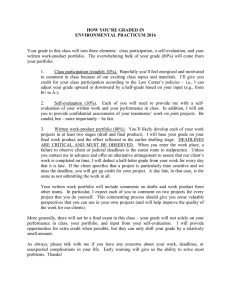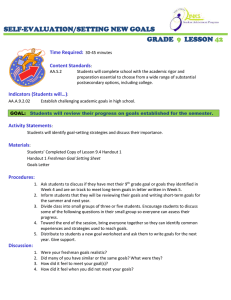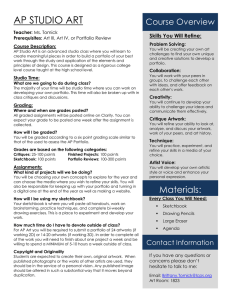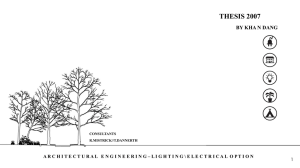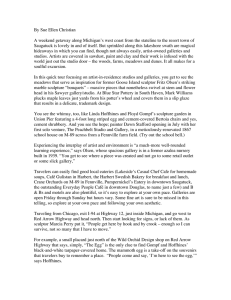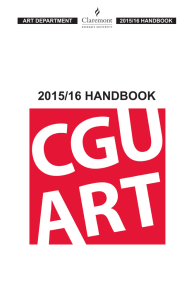Learning Outcomes 1.
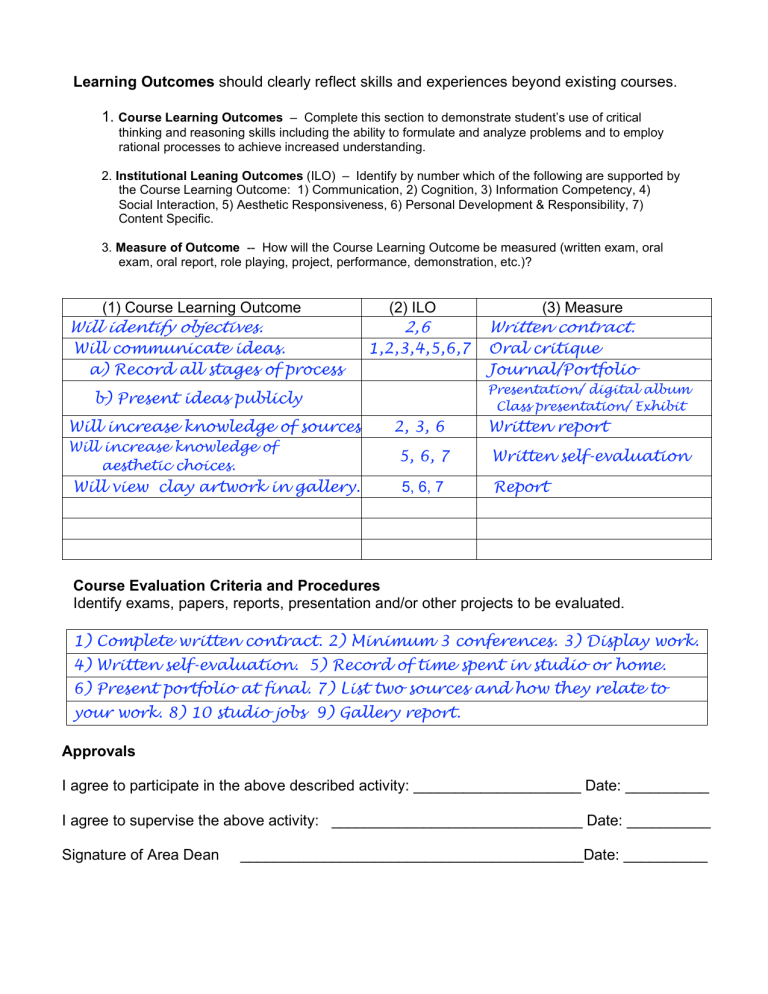
Learning Outcomes should clearly reflect skills and experiences beyond existing courses.
1. Course Learning Outcomes – Complete this section to demonstrate student’s use of critical thinking and reasoning skills including the ability to formulate and analyze problems and to employ rational processes to achieve increased understanding.
2. Institutional Leaning Outcomes (ILO) – Identify by number which of the following are supported by the Course Learning Outcome: 1) Communication, 2) Cognition, 3) Information Competency, 4)
Social Interaction, 5) Aesthetic Responsiveness, 6) Personal Development & Responsibility, 7)
Content Specific.
3. Measure of Outcome -- How will the Course Learning Outcome be measured (written exam, oral exam, oral report, role playing, project, performance, demonstration, etc.)?
(1) Course Learning Outcome (2) ILO (3) Measure
Will identify objectives.
Will communicate ideas.
a) Record all stages of process
2,6 Written contract.
1,2,3,4,5,6,7 Oral critique
Journal/Portfolio
b) Present ideas publicly
Presentation/ digital album
Class presentation/ Exhibit
Written report Will increase knowledge of sources.
2, 3, 6
Will increase knowledge of
aesthetic choices.
5, 6, 7
Will view clay artwork in gallery.
5, 6, 7
Written self-evaluation
Report
Course Evaluation Criteria and Procedures
Identify exams, papers, reports, presentation and/or other projects to be evaluated.
1) Complete written contract. 2) Minimum 3 conferences. 3) Display work.
4) Written self-evaluation. 5) Record of time spent in studio or home.
6) Present portfolio at final. 7) List two sources and how they relate to your work. 8) 10 studio jobs 9) Gallery report.
Approvals
I agree to participate in the above described activity: ____________________ Date: __________
I agree to supervise the above activity: ______________________________ Date: __________
Signature of Area Dean _________________________________________Date: __________


